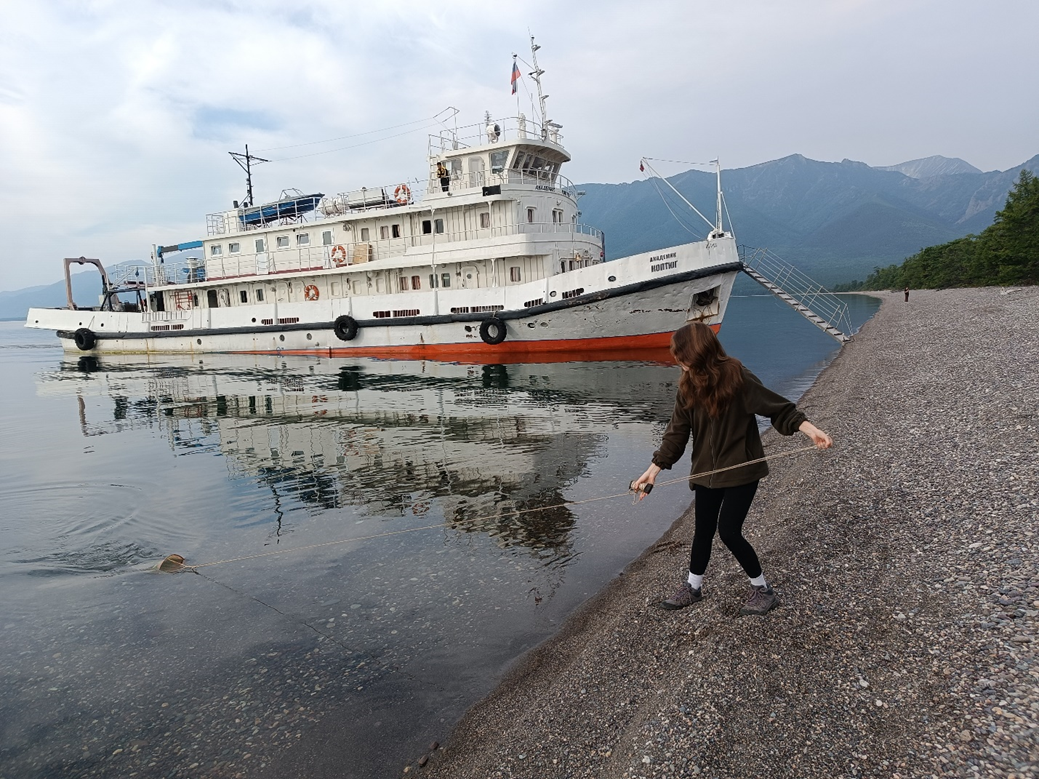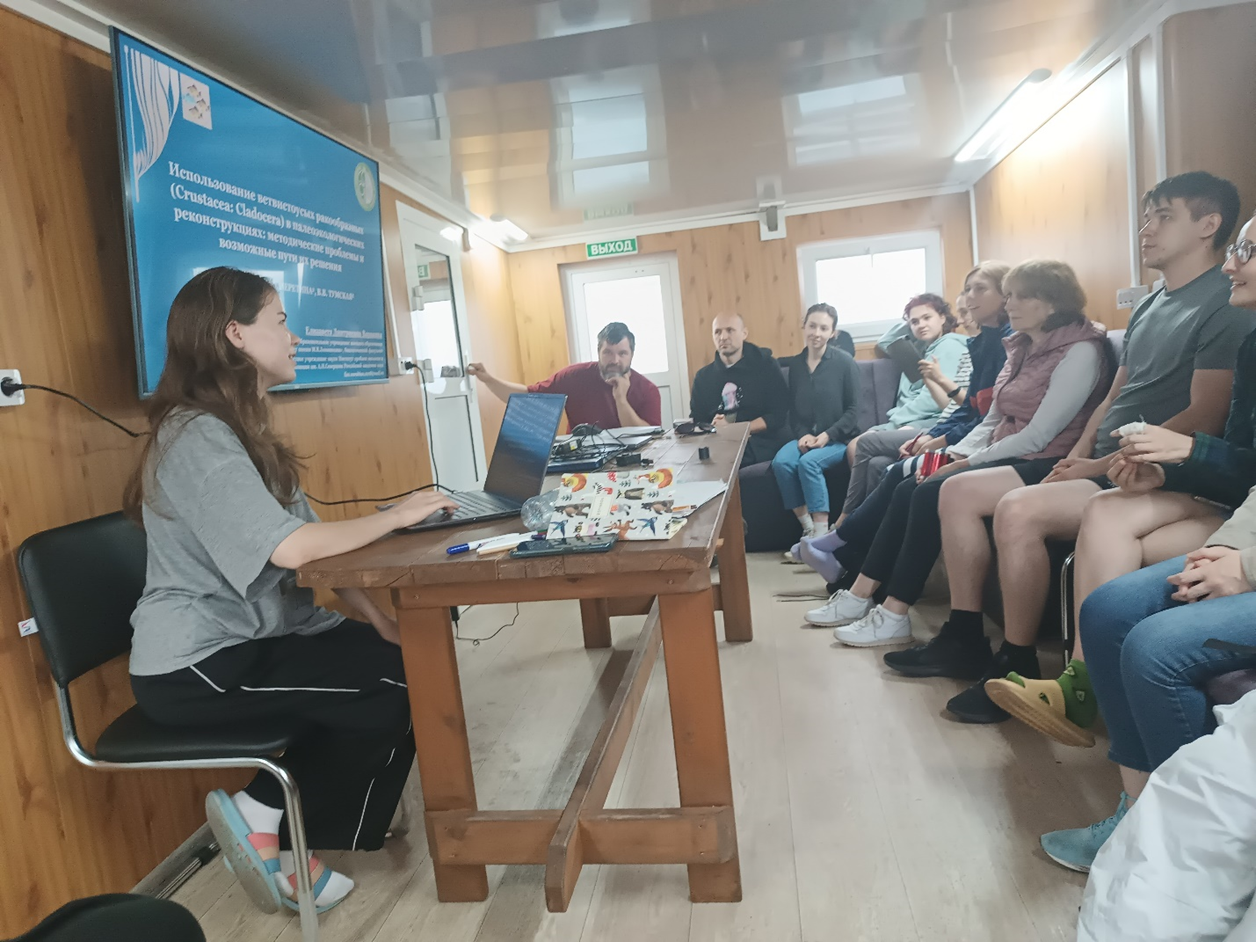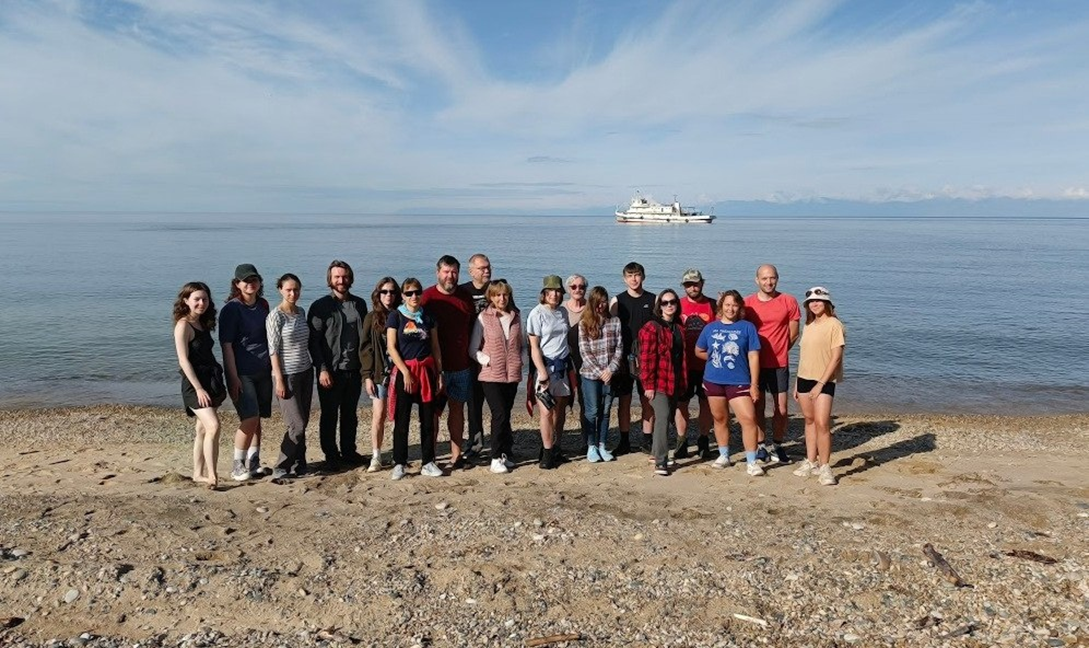
From August 16 to 26, 2024, an expedition to Lake Baikal took place as part of the Baikal-Evolution-2024 school for young scientists, organized by the Limnological Institute of the Siberian Branch of the Russian Academy of Sciences. Three employees of the Laboratory of Ecology of Aquatic Communities and Invasions took part in it: Doctor of Biological Sciences, Corresponding Member of the Russian Academy of Sciences Alexey Alekseevich Kotov, postgraduate student Dmitry Dmitrievich Pereboev and student Elizaveta Dmitrievna Varakina.
The research vessel Akademik Koptyug with scientists on board set out from the village of Listvyanka on the evening of August 16 and headed for Olkhon Island and the Maloe sea. The expedition stopped in the area of Cape Muzhinay, then in the port of Severobaikalsk. After that, the ship went to the Ushkany Islands, making stops in the villages of Davsha and in Zmeevaya Bay. Then it went south through the village of Maksimikha, Cape Posolsky and Cape Tolsty. In the evening of August 25, the ship arrived in the village of Bol'shiye Koty, and in the morning of the 26th, it went to the village of Listvyanka.

The School of Young Scientists brought together students, postgraduates and scientists from Moscow, Novosibirsk, Irkutsk and St. Petersburg. Lectures from biologists became a significant part of each day on the ship.
Aleksey Alekseevich Kotov presented three lectures on various topics to the participants, from the biogeography of continental water bodies to approaches to writing grant applications.

In addition to the invited lecturers, the school participants also prepared reports on their work. Postgraduate student Dmitry Dmitrievich Pereboev presented some of the results of the laboratory's work in the report "Molecular phylogenetics of cladocerans in light of whole-genome sequencing", in which he paid special attention to modern methods of processing the obtained molecular genetic data. Elizaveta Dmitrievna Varakina in her report "Using cladocerans (Crustacea: Cladocera) as a model object for paleoecological reconstructions: methodological problems and possible solutions" drew the participants' attention to a number of difficulties that the laboratory staff encountered while conducting research under the RSF project No. 22-14-00258.

An important part of the expedition was sampling of aquatic organisms. The participants focused on studying the fauna of Baikal amphipods, but another group of crustaceans, cladocerans, was not left without attention. The staff collected samples from a number of unique and hard-to-reach places on Baikal. All the material was delivered to the laboratory and is in the initial stage of processing.

The expedition would not have been possible without D.Sc. (Biology) Dmitry Yuryevich Shcherbakov, the organizer of the school of young scientists "Baikal-Evolution-2024".
The Laboratory of Ecology of Aquatic Communities and Invasions expresses its gratitude to the staff of the SB RAS for the opportunity to take part in the expedition!

